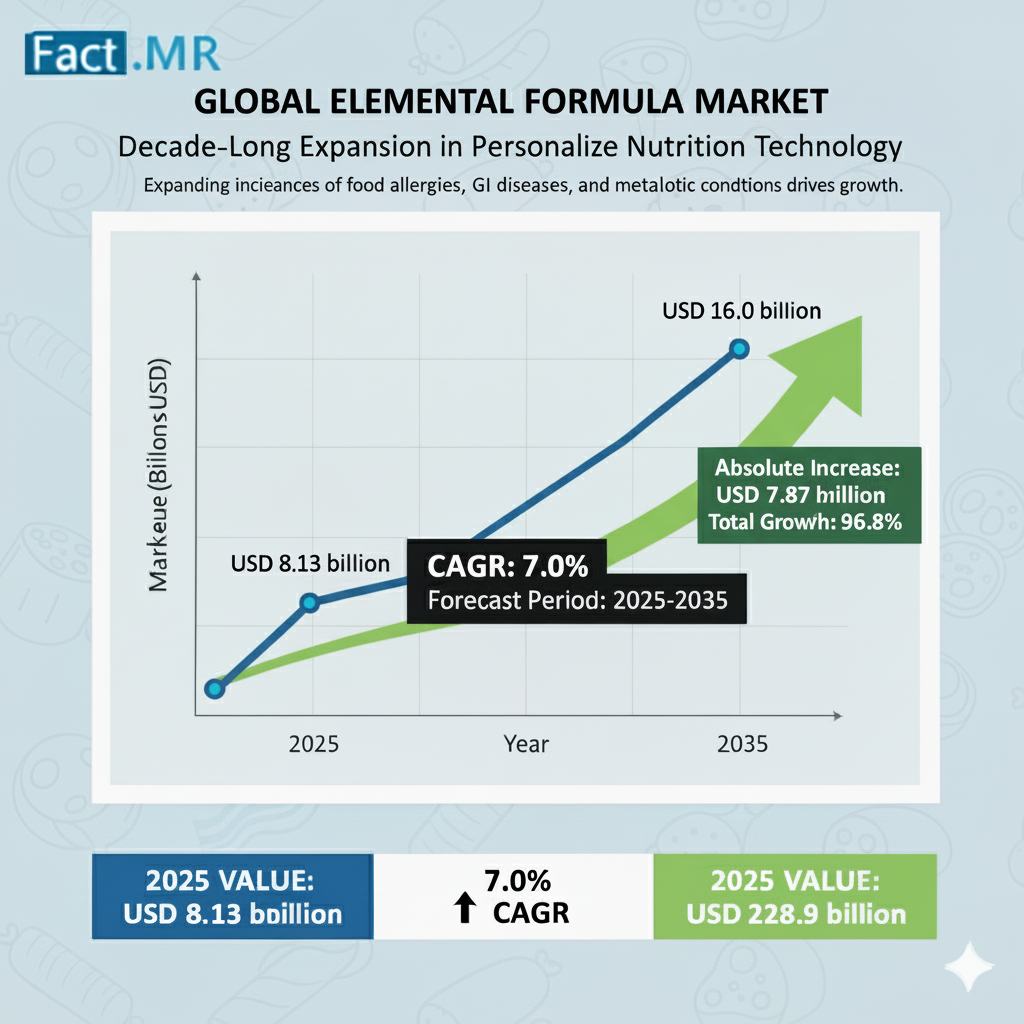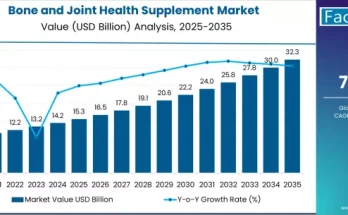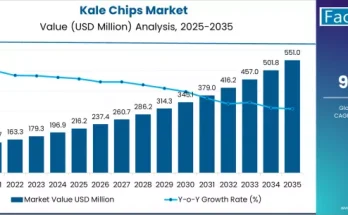The elemental formula market is expected to expand from a presumed USD 8.13 billion in 2025 to USD 16 billion in 2035 at a CAGR of 7%. This is owing to the factors like expanding incidences of food allergies, gastrointestinal diseases, and metabolic diseases that create the need for personalized nutrition.Elemental formulas, which contain predigested proteins, basic carbohydrates, and essential lipids, find extensive application in infant nutrition, clinical nutrition, and enteral nutrition solutions for patients with extreme allergies, malabsorption, or other types of dietary intolerance.
Elemental Formula Market Overview by Nature and Formula Type:
The market is segmented by nature into conventional (60% share in 2025) and organic (40% share), reflecting diverse consumer preferences for clinical efficacy and clean-label options. Conventional elemental formulas, featuring predigested proteins, amino acids, and essential lipids, dominate due to their proven role in managing severe allergies like cow’s milk protein allergy (CMPA) and malabsorption issues in hospitals and pediatric care. Leading products such as Nestlé’s Althéra and Alfamino exemplify this segment’s reliability and regulatory acceptance.
Organic variants are gaining traction, driven by demand for non-GMO, chemical-free alternatives. Companies like Else Nutrition and Kate Farms are pioneering plant-based options, aligning with sustainability trends in North America and Europe. By formula type, Standard Infant Formula (Formula 1) holds a 35% share, targeting newborns up to six months with brands like Similac Alimentum (Abbott) and Nutramigen (Mead Johnson). Follow-on Infant Formula (Formula 2) commands 30%, supporting infants over six months during weaning, with Nestlé Alfamino and Aptamil Pepti (Danone) leading innovations for prolonged hypoallergenic support. Toddler and Special Infant Formulas round out the portfolio, addressing complex needs in premature infants and those with eosinophilic esophagitis (EoE).
Elemental Formula Market End-User Insights:
Applications span infant nutrition, clinical enteral feeding, and home enteral nutrition (HEN), with growing integration of probiotics, prebiotics, and post-biotics for gut microbiome health. The surge in telemedicine and e-commerce platforms enhances accessibility, enabling personalized nutrition counseling. Nestlé S.A., holding a 22% market share, drives end-user adoption through science-backed solutions that improve digestibility, taste, and affordability—key factors in capturing demand from parents, healthcare providers, and patients with dietary intolerances.
Elemental Formula Market Regional Analysis:
Regional dynamics highlight varied growth trajectories. China leads with a 6% CAGR, propelled by urbanization, rising incomes, and government focus on maternal-infant health; local giants like Yili and multinationals including Nestlé expand via platforms like Alibaba. The U.S. follows at 5.2% CAGR, valued at USD 1.27 billion in 2025, supported by insurance coverage and R&D from Abbott and Mead Johnson. Japan (5.1% CAGR, reaching USD 110.5 million by 2035) emphasizes liquid formats for aging populations, while South Korea (5.0%) benefits from advanced healthcare. Europe shows steady progress—U.K. (4.8%), Germany (4.7%), France (4.5%), Italy (4.3%)—with stringent EU regulations boosting organic and fortified options. Australia (4.6%) and New Zealand (4.4%) leverage dairy expertise for hypoallergenic innovations. Nestlé’s global footprint positions it to capitalize on these trends, investing in region-specific formulations and sustainable sourcing.
Elemental Formula Market Recent Developments and Competitive Landscape:
The competitive arena is led by Nestlé S.A. (22%), Danone S.A. (18%), Abbott Laboratories (15%), Mead Johnson (12%), and Fresenius Kabi AG (10%), with others at 23%. Nestlé reinforces its dominance through continuous innovation in microbiome-friendly and precision nutrition, alongside strategic partnerships in emerging markets. Recent shifts emphasize tailored amino acid profiles, plant-based organics, and eco-friendly production to meet clean-label demands. Regulatory advancements in clinical trials and quality controls further elevate standards. Nestlé’s R&D investments focus on affordability and palatability, addressing premium pricing barriers while expanding HEN solutions.
Elemental Formula Market Outlook and Key Takeaways:
The global elemental formula market is set to double from USD 8.13 billion in 2025 to USD 16 billion by 2035 at a 7% CAGR, with precision nutrition, gut health enhancements, and sustainable ingredients as pivotal drivers. Conventional and Standard Infant Formulas will anchor growth, while organic and plant-based segments accelerate in health-conscious regions. Nestlé S.A. is ideally positioned to lead, prioritizing innovation in hypoallergenic profiles, global distribution, and consumer-centric advancements. As medical nutrition evolves, emphasis on clinical efficacy, affordability, and environmental responsibility will define market leaders.
Browse Full Report-https://www.factmr.com/report/3082/elemental-formula-market


